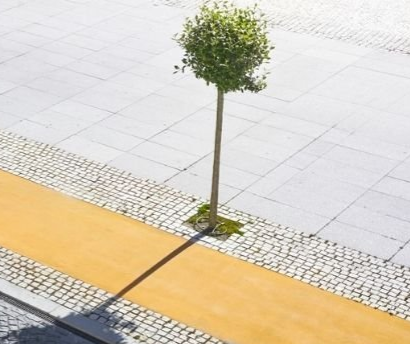
During the dog days of summer, one of the best things you can do to get relief from the heat is to go to a forested park. Underneath the trees, you will find that temperatures significantly drop. This has to do with the shadow of the canopy and the cool ‘sweat’ provided by the leaves themselves.
A new study maintains that even a single tree can create a more comfortable microclimate. Researchers discovered this fun fact when they put temperature sensors on cars that were parked underneath the shade of trees. This research was conducted in our nation’s capital.
What did researchers discover? Over the course of one hot day and one hot night, the team worked hard to gather more than 70,000 air temperature readings in different settings around Washington, DC. Compared with the streets that didn’t have any trees whatsoever, those areas that did reported cooler evening temperatures. The effect continued after the sun set. Over the course of the night, the neighborhoods with trees demonstrated cooler temperatures than those without.
We already know that planting trees is a good thing. It helps offset planetary carbon emissions for one thing. However, it’s important to note, as a result of this study, that we should not “underestimate the role that individual trees can play in mitigating heat in urban areas,” as Michael Alonzo, an environmental scientist at American University says. As a result, Mr. Alonzo believes that “city planners can take advantage of small spaces that abound in urban areas by planting individual trees.”
From previous articles on this very blog, we learned that trees cool down city dwellers and buildings. They act as sort of an air conditioner for folks and structures alike, but how? Well, for one thing, shade reduces the radiation the sun hits and heats the ground with. In addition, the transpiration of leaves on a hot day can also impact local temperatures.
Of course, measuring or modeling that impact is a bit of a challenge. The task gets harder to do when there are other mitigating factors such as: the extent of the canopy, the ground cover, the season of the year, the overall health of the trees and, last but not least, the time of day. For example, in the afternoon some studies show that it takes at least 40 percent of canopy coverage to cool down a forest in a park. Even though we know that trees can cool things down, it’s still unclear if the benefits last after sundown or extend to trees that are more spread out.
Individual trees showed no such effect. However, in the evening, those single trees did make a difference. In the study, a single 15-meter-tall tree, which averages about 49 feet, casts a 14-meter shadow in the afternoon. As evening approaches, the tree’s shadow increases to 56 meters. That’s significant, but what does it mean? As a result, the fact is the just a smattering of canopies could cover the same amount of ground as a dense forest does by the end of the day.
This is significant because urban areas without much greenery can turn into heat islands during the summer. The rising temperatures from climate change make it harder for residents to find relief from the heat. As Mr. Alonzo notes, “evenings are not quite the respite from the heat that we once had.” Therefore, distributed trees help a city cool off in the evening which is very important for human health.
We hope this article gave you some food for thought. We are never opposed to planting more trees. We understand their benefits and hope that, by bringing this information to you, you do too. Thank you, as always, for reading our blog.











